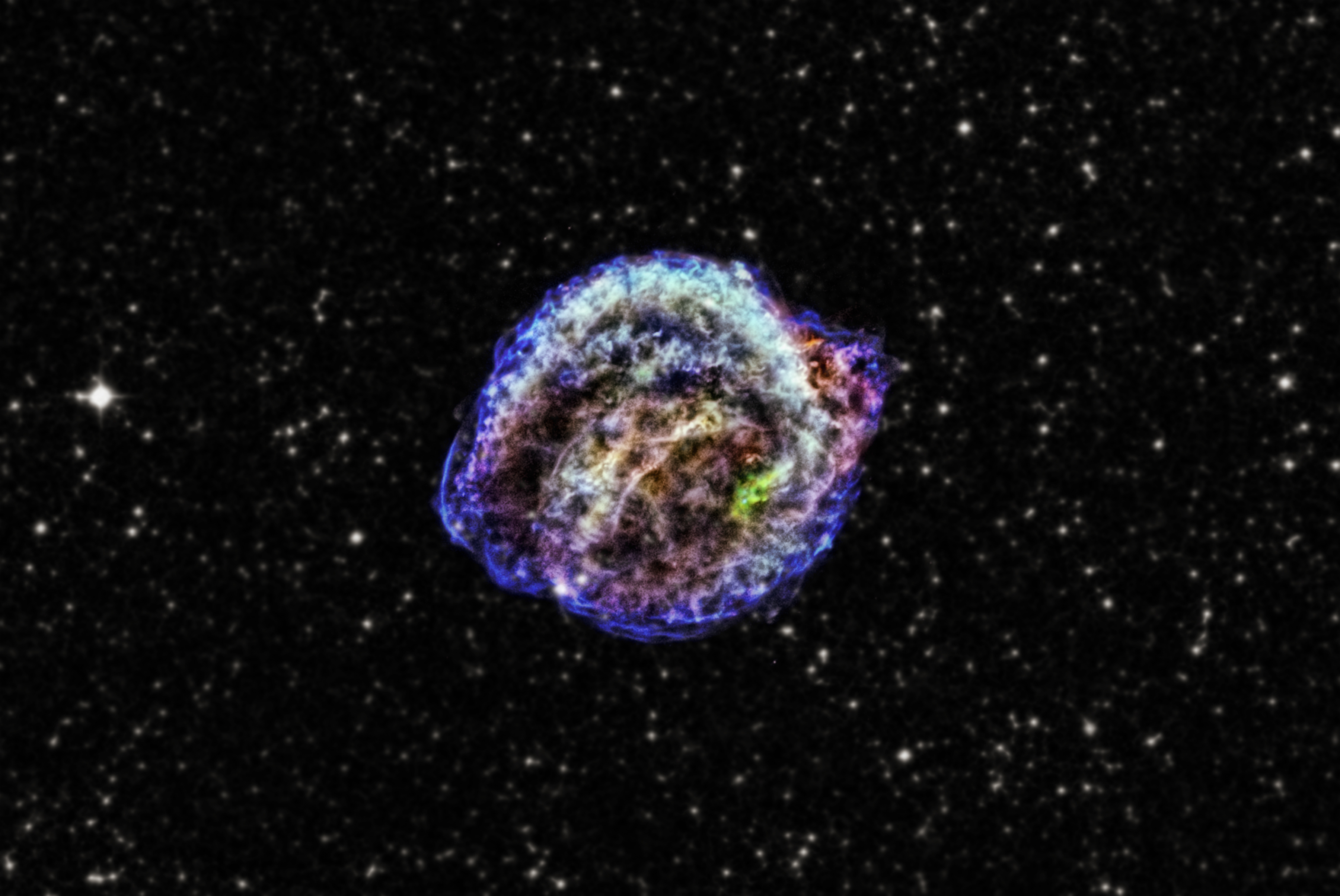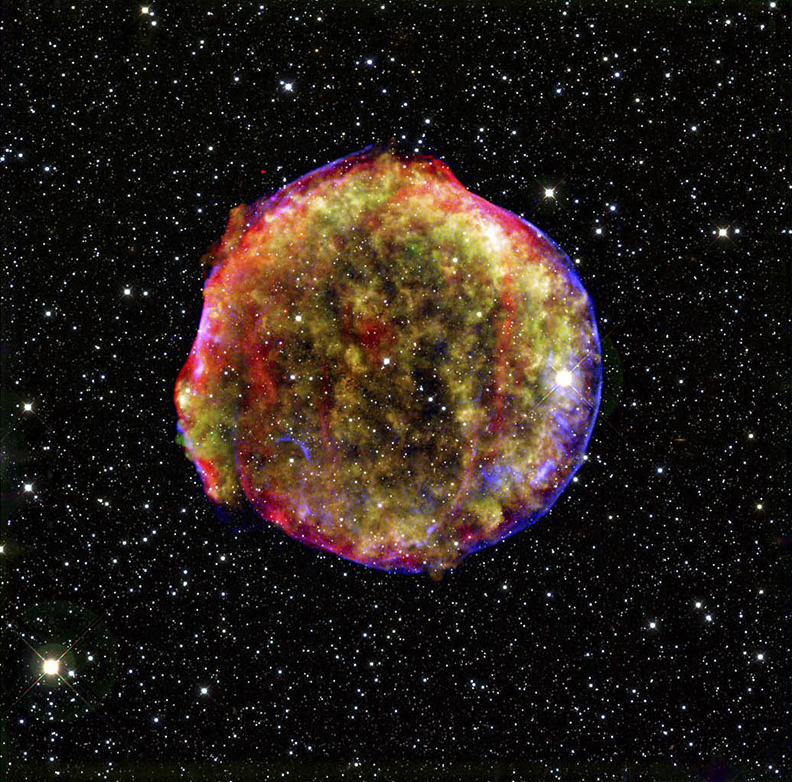Science
Related: About this forumKepler's Supernova Remnant in X-Rays (new wallpaper)

Image Credit: X-ray: NASA/CXC/NCSU/M. Burkey et al. Optical: DSS
Explanation: What caused this mess? Some type of star exploded to create the unusually shaped nebula known as Kepler's supernova remnant, but which type? Light from the stellar explosion that created this energized cosmic cloud was first seen on planet Earth in October 1604, a mere four hundred years ago. The supernova produced a bright new star in early 17th century skies within the constellation Ophiuchus. It was studied by astronomer Johannes Kepler and his contemporaries, without the benefit of a telescope, as they searched for an explanation of the heavenly apparition. Armed with a modern understanding of stellar evolution, early 21st century astronomers continue to explore the expanding debris cloud, but can now use orbiting space telescopes to survey Kepler's supernova remnant (SNR) across the spectrum. Recent X-ray data and images of Kepler's supernova remnant taken by the orbiting Chandra X-ray Observatory has shown relative elemental abundances typical of a Type Ia supernova, and further indicated that the progenitor was a white dwarf star that exploded when it accreted too much material from a companion Red Giant star and went over Chandrasekhar's limit. About 13,000 light years away, Kepler's supernova represents the most recent stellar explosion seen to occur within our Milky Way galaxy.
Follow the link to get a hi-res (3600 x 2407 pixel) version.
http://apod.nasa.gov/apod/ap130515.html
longship
(40,416 posts)That would be the supernova of 1572 observed by Tycho Brahe on November 11 of that year. Tycho had to be one of the most eccentric people in history. He had dwarf, an elk, and a golden nose. Sadly the elk died after it fell down the stairs when it got too drunk. Don't ask me what it means that Tycho had a dwarf. An amazing character, but apparently most difficult to work with. Just ask Kepler.
R&K
pokerfan
(27,677 posts)
This composite image of the Tycho supernova remnant combines X-ray and infrared observations obtained with NASA's Chandra X-ray Observatory and Spitzer Space Telescope, respectively, and the Calar Alto observatory, Spain. It shows the scene more than four centuries after the brilliant star explosion witnessed by Tycho Brahe and other astronomers of that era.
http://chandra.harvard.edu/photo/2009/tycho/
longship
(40,416 posts)There is no cable or broadband Inet in the Manistee National Forest. We have electricity and not much else as far as utilities. We supply our own water, sewage, heat (via fuel deliveries via truck), garbage services, and we have to walk out to the road to get US Mail. No paved roads here either.
But it's beautiful here, and the skies are dark at night. What more could anybody want? I know... a good Internet connection.
Thanks, friend.
lastlib
(23,168 posts)I have one from the WISE (Wide-Field Infrared Survey Explorer) telescope for my desktop.
pokerfan
(27,677 posts)
A group of stars have been captured mid-formation by NASA's WISE telescope, depicting impressive pillaring clouds of gas and dust known as "elephant trunks".
The activity is centred around the Dolidze 25 star cluster located within the Sh2-284 nebula on the edge of the Milky Way. Like the Pillars of Creation in the Eagle nebula star cluster photographed by the Hubble Telescope in 1995, the "elephant trunks" emanating outwards are pockets of star-forming gas and dust clouds denser than the surrounding area.
http://www.wired.co.uk/news/archive/2011-03/09/star-formation-elephant-trunk-photos